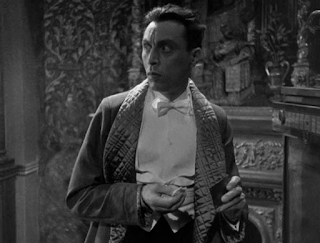#239: RENOIR, Jean: The Lower Depths (1936)
RENOIR, Jean (France)
Commentary
None.
Introduction
The Lower Depths [1936]
Spine #239
DVD
DVD
Jean Renoir and Akira Kurosawa, two of cinema's greatest directors, transform Maxim Gorky's classic proletariat play The Lower Depths in their own ways for their own times. Renoir, working amidst the rise of Hitler and the Popular Front in France, had need to take license with the dark nature of Gorky's source material, softening its bleak outlook. Kurosawa, firmly situated in the postwar world, found little reason for hope. He remained faithful to the original with its focus on the conflict between illusion and reality — a theme he would return to over and over again. Working with their most celebrated actors (Gabin with Renoir; Mifune with Kurosawa), each film offers a unique look at cinematic adaptation — where social conditions and filmmaking styles converge to create unique masterpieces.
89 minutes
Black & White
Black & White
Monaural
in French
1:33:1 aspect ratio
Criterion Release 2004
Director/Writers
Based on the play by Maxim Gorky, Na dne.
Screenplay by Jacques Companéez, Jean Renoir, Charles Spaak, and Eugene Zamiatine.
Renoir was 42 when he directed The Lower Depths.
The Film
Other Renoir films in the Collection:
#818: La Chienne (1931)
#305: Boudu Saved From Drowning (1932)
#1040: Toni (1935)
#818: La Chienne (1931)
#305: Boudu Saved From Drowning (1932)
#1040: Toni (1935)
#746: A Day In The Country (1936)
#1: Grand Illusion (1937)
#324: La Bête Humaine (1938)
#216: The Rules Of The Game (1939)
#276: The River (1951)
#242: The Golden Coach (1953)
#243: French Cancan (1955)
#244: Elena And Her Men (1956)
#1: Grand Illusion (1937)
#324: La Bête Humaine (1938)
#216: The Rules Of The Game (1939)
#276: The River (1951)
#242: The Golden Coach (1953)
#243: French Cancan (1955)
#244: Elena And Her Men (1956)
The Film
The play. An easy, worthwhile read.
Criterion cleverly packages the two films — 21 years apart, two master filmmakers — in the same box.
Kurosawa changed Gorky’s character names to Japanese, while Renoir more or less retained the Russian names.
Unlike the play and the Kurosawa version, Renoir mainly focuses on just two characters -- Pepel (Jean Gabin), the thief and the Baron (Louis Jouvet).
Unlike the play and the Kurosawa version, Renoir mainly focuses on just two characters -- Pepel (Jean Gabin), the thief and the Baron (Louis Jouvet).
The thematic contrast between the relative wealth and poverty seems to be Renoir's primary concern.
Gabin, of course, is smooth, charming and imbued with a deep sense of inner conflict whereas Jouvet's Baron is clownish, cynical and completely uninterested in his own personal fate.
Also unlike the play or the Kurosawa, the ending veers away from a harsh, realistic tone to one with the possibility of redemption and change -- a characteristic common to many of Renoir's films from this period.
Also unlike the play or the Kurosawa, the ending veers away from a harsh, realistic tone to one with the possibility of redemption and change -- a characteristic common to many of Renoir's films from this period.
Film Rating (0-60):
The Booklet
Twenty-two page booklet featuring an essay by Alexander Sesonske.
52
The ExtrasThe Booklet
Twenty-two page booklet featuring an essay by Alexander Sesonske.
“Renoir did not see Kurosawa’s film until 1977. He watched it with great interest, then remarked, ‘that is a much more important film than mine.’”
Commentary
None.
Introduction






Comments
Post a Comment